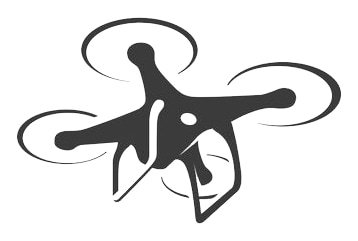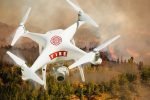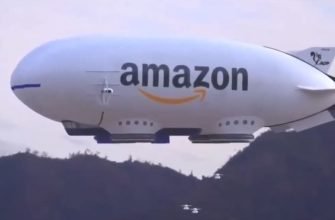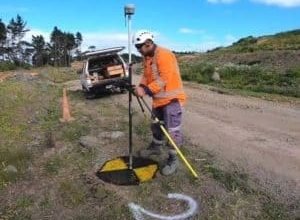
Camera technology has come a long way. FPV cameras are small, light, and reasonably priced which is great for drone owners around the world who want to take stunning videos from all angles without paying too much of an upfront cost. These FPV cameras are installed onto a drone.
So when you are flying you are receiving a real-time video by using a video transmitter. Depending on the drone, transmitter will send the live video signal to your remote control screen, smartphone device, monitor, tablet, or FPV Goggles.
FPV technology allows you to fly a drone further and higher than ever before by using the remote control screen, tablet or FPV Goggles. Depending on the type of drone, they can transmit live video signals from up to 5 miles away! Military drones or large high-end drones are able to go thousands of miles with FPV technology, but there are also some great options for more budget-friendly drone owners who want something that will last them a while.
When you are flying a quadcopter with FPV, you can literally feel like a bird. That is why this trend is rapidly gaining popularity. In this article, we’ll give you a better understanding of FPV camera technology in drones, and how it works. After you finish, you’ll able to make changes to your FPV camera on your drone and modify it as you wish.
For those who want to know more about 10 Best FPV Drone Goggles in 2021, you can read this article.
- What Is FPV Camera Technology In Drones?
- FPV Components
- FPV Types: Analog & Digital
- What is FPV Camera TVL Resolution?
- How Many TVL do You Need?
- Bandwidth of FPV Transmitter
- FPV Camera – Which to choose CMOS or CCD?
- When CMOS Camera Sensors Are Better Choice?
- When CCD Camera Sensors Are Better Choice?
- FPV Camera – Dimensions & Weight
- FPV Camera – Connection & Voltage
- FPV Camera – Broadcast Footage
- FPV Camera Sensitivity
- FPV Camera – Transmitter Power
- FPV Camera – Video Switcher
- FPV Camera – Video Transmission Latency
- How to Measure FPV Camera Latency?
- FPV Camera – Field of View
- Field Of View & Lenses
- What Field Of View Is Best?
- FPV Camera – Dynamic Range
- FPV Cameras To Extend The Range Of Transmission
- Using Omnidirectional and Directional Gain Antenna Together
- FPV Night & Starlight Cameras
- FPV Information And Basic Setup Video
- The Pros and Cons of FPV Cameras
- FPV Cameras – Popular Models
- 1. Runcam Cameras
- 2. Foxeer Cameras
- How to Choose FPV Camera
- Conclusion
What Is FPV Camera Technology In Drones?
FPV camera for drone allows you to observe landscapes from a height along with the trajectory of the drone. FPV is translated as the “first-person view”. The system works on the basis of a radio signal, allows you to see distant objects with your own eyes from the drone perspective. FPV Camera is located on the drone body. While it flies, you can watch everything in real-time.
By using FPV camera, you can see the exact location ofthe drone at a given time and navigate the surrounding area. After we’ve figured out what FPV is, let’s take a look at other important components that are essential.
FPV Components
The FPV system consists of:
- Camera;
- Special antenna to enhance signal quality;
- A transmitter, the power of which determines the radius of propagation of the video signal;
- Monitor;
- Power supply unit.
During the flight, the video is broadcast to a monitor, smartphone, tablet, or Goggles.
FPV Types: Analog & Digital
When we talk about the transmission of a drone video, it is realized by means of a transmitter and a receiver, and they can operate in different radio frequency ranges – 900 MHz, 1.2 GHz, 1.3 GHz, 2.4 GHz, 5.8 GHz. In the hobbyist niche, the most commonly used bands are 2.4GHz and 5.8GHz. Keep in mind that equipment that is used for data transmission can be digital and analog. Each type has its pros and cons, but one is clearly better than the other. Let’s take a look at each in turn.
The frequency of the receiver and VTX determines the performance of the entire FPV system.
- The highest quality option is 5.8 GHz analog communication.It provides a good signal, suitable for organizing drone races. The standard is used in racing drones, professional FPV systems (Eachine Assassin 180 ARF).
- Digital signal transmission via WiFi FPV camera at 2.4 GHz is an inexpensive and easy way to exchange information, but the video signal is delayed. The inhibition can be explained by the specifics of the protocol.
The delay is not specified in the model instructions but affects safety during races. If you need a quadcopter with an HD FPV camera for fast flights, then the delay must be determined in advance, otherwise, there is a risk of encountering an obstacle too late.
What is FPV Camera TVL Resolution?

The size of the FPV camera matrix is reflected through the TVL indicator – the number of horizontal lines that fit in the frame. TVL is a measure of the horizontal resolution of FPV cameras. Higher TVL resolutions will produce higher detailed images from your camera, but bear in mind that an HD recording needs to be at least 720p or 1080i for it to look decent on most TVs.”
That’s why it is always good to have a higher TVL resolution camera. That said, other factors such as color reproduction, latency, and dynamic range are also very important for picture quality. The most common TVL resolutions that a camera can have is: 420, 480, 600, 800, and 1000.
How Many TVL do You Need?
It makes no sense to take drone models where the indicator is more than 1000 TVL because the difference is difficult to notice with the human eye. The 300 TVL video is the lowest quality. For racing at altitude, it is advantageous to take models with a matrix size of 600 TVL. For flight recording, heading cameras with 1000 TVL are suitable.
DJI now has 3 high-definition transmission systems on the market that include an excellent quality live video and have exceptionally low latency times with superb clarity as well.
Bandwidth of FPV Transmitter
The resolution of your FPV transmitter will affect how much bandwidth is required to send the video signal. I have yet to find the best answer, but according to my research and speaking with other hobbyists that I know who are more experienced than myself on this topic, they say that limiting TVL resolutions for FPV transmissions above 600 (and some people claim 1000) quite enough.
Unfortunately though, as far as higher resolutions go like 1200 or even 1600 – it’s still largely dependent upon what type of camera you’re using which could be analog or HDTV compatible.
FPV Camera – Which to choose CMOS or CCD?
The image sensor that is located inside your FPV camera will affect its performance. There are two main types that FPV cameras use: CCD or CMOS sensors. Which to choose? Short answer-CMOS outperforms in terms of image quality, but they’re more expensive for this application so it may not always be worth the cost.
For drone racing, professional use, it is better to take a CCD. If you are flying for pleasure and want to take high-quality images sometimes, choose CMOS. On YouTube, you can watch videos for each model sensor, and evaluate the quality of the recording.
When CMOS Camera Sensors Are Better Choice?
The cost of a CMOS camera is usually less than the CCD camera, and when FPV racing drones crash you will notice that often times it’s because they have mounted cameras in the front of the drone. This makes them an easy target for crashes to come at any time!
Most FPV racing frames have some sort of camera protection built in to avoid the camera taking too much impact. CMOS cameras also usually weigh less and use less power than CCDs which is important if you’re using an ultra-micro drone.
Therefore, if you are using a CMOS camera we recommend this 800 TVL CMOS 1.4mm lens for those looking into upgrading their current system or starting from scratch with a new frame!
When CCD Camera Sensors Are Better Choice?
CCD cameras can capture the whole image by using a rolling shutter to take the image pixel from the top to bottom which then creates a rolling effect. CCD has a wider dynamic range than CMOS so they perform better under challenging conditions such as high brightness levels or very dark scenes (e.g., forest settings). Hence why you’ll find many drones that are equipped with 4K lenses these days!
You can check on Amazon the large selection of the best FPV cameras on the market, that comes with great features.
FPV Camera – Dimensions & Weight

It is very important to choose the right size of FPV cameras for your quadcopter. The size of the drone is determined by the diagonal of the hull. If a drone with an FPV camera is more than 200mm, then camera weight and dimensions are not as important for it as for smaller counterparts.
Dimensions of FPV cameras:
- Nano – less than 19 mm;
- Micro samples – 19 mm;
- Mini format – 21 mm;
- Standard cameras – 28 mm.
The weight of the FPV cameras varies in the range of 4-10 g. For small quadcopters, course models of the AIO type (“all in one”) with an installed video transmitter are used. They are small, lightweight, but cannot boast of a high-quality picture.
FPV Camera – Connection & Voltage
Most cameras are connected using 3 wires: positive (red), ground (black), and video (yellow). Additionally, there may be connection contacts:
- OSD – a regulating device that changes camera settings;
- VBat – battery for monitoring voltage indicators;
- Sound – this allows you to use a microphone during flights, to record an event by voice, rarely used.
The voltage range for most FPV camera models is between 5-36 V. The camera can work through a stabilizer or from a rechargeable battery.
FPV Camera – Broadcast Footage
To view the image from your quadcopter, a phone screen, a tablet display, a monitor or Goggles are used. Budget FPV systems transmit data to the smartphone display via Wi-Fi. External monitors are not used in entry-level FPV systems. To work via mobile devices, you need to install a special application, which is released by the developers of quadcopters. With it, you can adjust the image, broadcast parameters and control the drone.
Video transmission to a separate monitor is the prerogative of professional FPV systems. A monitor is often not included and must be selected based on your specific needs.
High-quality video transmission to the goggles is perfectly implemented in high-price FPV systems. There is no point in buying a quadcopter with virtual reality glasses for $100. In them, the video is transmitted poorly, the eyes get tired, and the qualitative effect of presence is not obtained.
FPV Camera Sensitivity
Light sensitivity is measured in lux. The smaller the sensitivity is, the better. Night FPV cameras have the IR Sensitive marking, that is, they are also sensitive to the infrared range, which makes daytime shooting worse, but helps to see perfectly in the dark. For night flights, it is convenient to use LED lighting. It is economical, non-dazzling and softly illuminates the subject.
FPV Camera – Transmitter Power
The power of the device determines the transmission distance of the signal. The higher the indicator, the more expensive the transmitter and the more electricity it consumes. When the flight range is doubled, the power quadruples. If you have flown 1 km with a 200mW transmitter, then for a distance of 2 km, a device with 800mW power is suitable.
FPV Camera – Video Switcher
The video switch is required when installing several types of FPV cameras on the drone at once. With it, you can prohibit or stop recording, change device settings. Flight information is obtained from each camera.
FPV Camera – Video Transmission Latency
FPV cameras have a lot of information to process, and that’s why sometimes they can take up so much time. This processing is called “latency” and it happens when all the data from an image sensor gets sent to your FPV camera. Faster latency means less lag for you while flying!
If you want better video quality on your drone footage without sacrificing speed then try using action cameras like GoPro cameras instead of dedicated FPVs. When it comes to drone racing, a 100 ms latency delay can mean the difference between winning or losing in many cases, so be sure you’re getting one with less than 40 milliseconds of lag time before deciding which action cam will work for you!
If you’re building your own drone and want to use a GoPro as the FPV camera, this video will show you how.
How to Measure FPV Camera Latency?
You can test (measure) the latency of your FPV camera equipment with a stopwatch. All you have to do is make sure that both the camera and timer are in view on-screen at all times, then take two photos. If you want an accurate reading for how long it takes between when the action starts taking place until after they appear to live through video feed- try using a stopwatch!
After comparing the time visible in your photo of the timer and on your FPV monitor, it’s clear that a signal took about 100 milliseconds to travel from camera A to video receiver B. This is one way you can measure how long latency has been when transmitting data between digital devices. If you want to know more about how to measure latency, read this article, low latency video transmission.

FPV Camera – Field of View
The Field of View (FOV) is a measure of how much the FPV camera can see around it as defined by an angle.
Field Of View & Lenses
The field of view can be difficult to determine when buying a FPV camera due to various factors. Some FPV cameras do not specify their FOV in degrees, but rather by the lens focal length instead. The camera lenses for FPV photography are selected by thread diameter and focal length. The table below shows an approximation for each type of lens (in mm). The human eye has a 2.97mm focal width;
- 2 mm lens – 185°
- 7 mm lens – 170°
- 1 mm lens – 158°
- 5 mm lens – 147°
- 8 mm lens – 130°
- 0 mm lens – 127°
- 6 mm lens – 92°
- 0 mm lens – 88°
- 0 mm lens – 78°
Depending on your use, the higher field of view the better. However, it is important to consider the distortion that will result in an aerial camera with increased FOV.
You can check the review of great Walkera Goggle 4 FPV.
What Field Of View Is Best?
FPV cameras come with various lenses, and it is up to the pilot to choose which field of view he needs. Some pilots prefer a narrow yet more detailed field of view while others want as wide as possible. The camera you choose should depend on what will be easiest for your drone flying style!
FPV Camera – Dynamic Range

The Wide Dynamic Range (WDR) on your FPV camera dictates how well the cameras can record the details in very dark and very bright areas of an image. A low dynamic range is a common problem for FPV pilots as they typically look at the horizon. This can be an issue if your camera has a lower level of contrast because it will focus on everything above you and not allowing viewers to see any details such as what’s below them or along their flight path.
The easiest way around this, however, would be by tilting the camera slightly down so that more ground becomes visible with some parts of the sky being washed out in order to keep exposure levels balanced between both areas. Most FPV cameras that are used on quadcopters are set to have wide dynamic range.
FPV Cameras To Extend The Range Of Transmission
You can extend your transmission range by up to 10 miles (16 km) with a few small changes. You may be able to boost the reach of your video signal and fly even further than before if you make some modifications.
Using Omnidirectional and Directional Gain Antenna Together
When you are flying with your drone, the directional antenna will provide clear video in one direction while the omnidirectional antennas picks up a signal from all directions. The diversity controller switches between both of these antennas to ensure that there is always strong FPV feed available no matter where you go.
The ideal way to receive live video is through using an omnidirectional antenna along with a directional gain antenna for maximum range. A diversity controller allows for switching between either type depending on which has stronger reception at any given moment when you are flying your drone.
FPV Night & Starlight Cameras
In many countries, it is not legal to fly with your drone at night but there are a few options available. One of these involves using IR sensitive cameras which can help you while flying in low light conditions during sunset or sunrise when the lighting tends to be darker than other times of day.
There is also an option for those who want specialized equipment and may use starlight FPV camera that has very high lux sensitivity enabling you to work efficiently even with lower levels of light as well. As discussed above, when using cameras in low-light settings having an infrared filter can increase clarity due to how they react differently from normal ones and provide more details on subjects like people’s faces or animals’ eyes (Lumens).
FPV Information And Basic Setup Video
The Pros and Cons of FPV Cameras
Pros:
- Maximum immersion in the flight process
- The ability to take videos and photos from air
- Instant correction of the drone’s movement, excellent possibilities for avoiding collisions
- Ideal conditions for exploring the territory while hunting or fishing, and other professional tasks
Cons:
- High-quality FPV will not be cheap
- In case of interference (buildings, cars, equipment), the signal can deteriorated sharply
FPV Cameras – Popular Models
1. Runcam Cameras
Runcam FPV cameras are excellent value for money. The lineup is represented by samples with various parameters, including action options for both racing and professional shooting.
From the rating of popular models, one can single out:
- Micro Swift 2 – solution for small quadcopters used for racing;
- Micro Swift 600TVL CCD – ready-made kit with camera and VTX;
- 3S – writes video to a memory card, has a high-speed TV-Out, suitable for onboard recording;
- Split Mini 2 & Split 2S are semi-professional GPS solutions for onboard 4K video recording.
2. Foxeer Cameras
Foxeer FPV cameras are action drone racing models. A popular, according to extreme reviews of drone racers. If the lighting conditions during the races are different, then the problem is solved by the video cameras Predator v2 and v3. The cost is 2 times higher than that of the HS, but the costs are justified by the quality of the footage.
Reduced versions of WiFi FPV cameras work on the same matrix as the main models. They differ only in the size of the body, and the performance of the lens. To create colorful photos and videos, Foxeer offers Monster Mini Pro cameras that adapt well to different terrains and landscapes.
How to Choose FPV Camera
The choice of FPV camera depends on financial capabilities. Too cheap models cannot boast of a tolerable quality of work, so they are not worth spending money on. They are only suitable for a general acquaintance with the capabilities of the devices.
A good example of such a devices is the Syma FPV camera. The developers have combined reasonable pricing and functionality suitable for beginners. There are still a few good reviews and articles on choosing FPV components and setting up on Arduino and other platforms on the network.
It is difficult for those who choose VPF equipment for already purchased handheld helicopters. It’s cheaper than buying a pre-assembled FPV drone (such as the Spydrone) but is error-prone if you don’t understand the nuances of component compatibility.
Conclusion
When flying a quadcopter with an FPV camera, it is worth remembering a few rules and features. First of all, we must not forget about the legislatively established norms governing the use of unmanned aerial vehicles. One of the most important norms, which is valid in almost all countries of the world, is the observance of the flight range – the quadcopter must always be in the pilot’s field of view.
When using FPV systems, it is not always convenient to follow the drone and it is easy to miss it. In addition, do not forget that the equipment can distort the position of objects in the frame – an obstacle, which, judging by the image on the screen, is several meters away, in fact, may be much closer.





